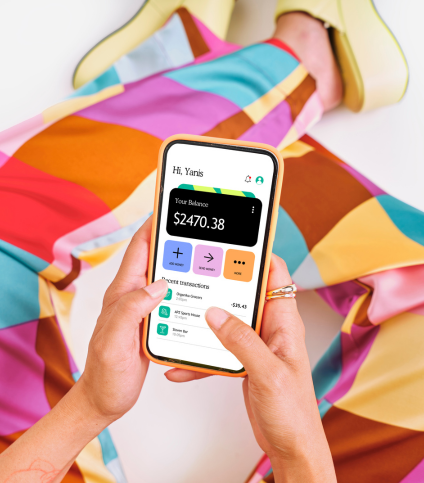In today’s rapidly evolving financial landscape, fintech apps are revolutionizing how consumers and businesses manage money. However, with over 26,000 fintech companies globally, cutting through the noise requires strategic, data-driven marketing that builds genuine trust and delivers measurable results.
This comprehensive guide will equip you with proven strategies to elevate your fintech brand, acquire high-quality users, and drive sustainable growth in an increasingly competitive market.
Step 1: Define Your Target Audience with Precision
Success in fintech marketing begins with laser-focused audience segmentation. Your users aren’t just “people who need financial services”—they’re distinct groups with specific pain points, behaviors, and preferences.
Create detailed user personas by analyzing:
- Demographics and psychographics: Age, income, career stage, financial goals, and risk tolerance
- Pain points and motivations: What financial challenges keep them up at night? What outcomes do they desperately want?
- Digital touchpoints: Which platforms do they trust for financial information? LinkedIn for B2B decision-makers, TikTok for Gen Z investors, or industry publications for enterprise clients?
- Customer journey mapping: How do they discover, evaluate, and adopt new financial solutions?
Pro tip: Use analytics tools, customer surveys, and social listening to gather real behavioral data rather than assumptions.
Step 2: Establish Unshakeable Trust and Credibility
In fintech, trust isn’t just important—it’s everything. Users are entrusting you with their most sensitive data and financial well-being. Your marketing must demonstrate rock-solid reliability at every touchpoint.
Build trust through:
- Transparent communication: Clearly explain your value proposition, pricing structure, and any potential risks. Avoid jargon and hidden fees that erode confidence.
- Security-first messaging: Prominently display security certifications, compliance badges (SOC 2, ISO 27001), and encryption protocols. Make security a competitive advantage, not an afterthought.
- Social proof that resonates: Feature authentic testimonials, detailed case studies with quantifiable results, and recognition from respected industry publications or regulatory bodies.
- Thought leadership: Position your executives as industry experts through speaking engagements, regulatory commentary, and educational content that demonstrates deep expertise.
Step 3: Deploy Strategic Multi-Channel Marketing
Effective fintech marketing requires a sophisticated omnichannel approach that meets users where they are throughout their decision-making journey.
Core marketing channels to master:
Search Engine Optimization (SEO): Dominate search results for high-intent financial keywords. Focus on informational content that addresses specific financial questions and transactional keywords that capture ready-to-convert users.
Example: A personal finance app might target keywords like “best budgeting app 2025,” “how to track expenses automatically,” or “budgeting app vs spreadsheet.” Create blog posts like “5 Signs You Need a Budgeting App” or “Complete Guide to Automated Expense Tracking.”
Content Marketing: Establish authority through educational resources like comprehensive guides, market analysis, regulatory updates, and interactive tools (calculators, comparison charts) that provide immediate value.
Example: A lending platform could create a “Small Business Loan Calculator,” weekly market interest rate updates, or a comprehensive guide titled “How to Qualify for Your First Business Loan in 2025.” A crypto exchange might publish daily market analysis or educational content like “DeFi Explained: A Beginner’s Guide to Decentralized Finance.”
Social Media Strategy: Tailor your approach by platform—LinkedIn for B2B relationship building, Twitter for real-time market commentary, Instagram for lifestyle-focused financial content, and YouTube for in-depth educational videos.
Example: A B2B payments company might share case studies on LinkedIn showing how they helped a restaurant chain reduce transaction fees by 30%. A robo-advisor could post Instagram stories featuring “Financial Tip Tuesday” with bite-sized investing advice, while creating YouTube videos explaining “Index Funds vs. ETFs: Which is Right for You?”
Paid Advertising: Leverage targeted campaigns on Google Ads, LinkedIn Ads, and Facebook Ads with careful attention to financial services advertising regulations and compliance requirements.
Example: A digital banking app might run Google Ads targeting “no fee checking account” with landing pages showcasing their fee-free structure. A business expense management tool could target LinkedIn ads to “CFOs at companies with 50-500 employees” with messaging about automated expense reporting.
Email Marketing: Nurture prospects with personalized financial insights, product updates, and educational content that guides them through their financial journey.
Example: An investment app might send personalized weekly portfolio summaries, market insights relevant to users’ holdings, and educational series like “Building Your First Investment Portfolio” for new users. A business banking platform could send monthly cash flow insights and tax planning reminders.
Partnership Marketing: Collaborate with complementary fintech companies, financial advisors, and industry influencers to expand your reach and credibility.
Example: A tax preparation software company might partner with freelance platforms to offer tax services to gig workers. A personal finance app could collaborate with financial advisors to provide educational webinars, or partner with employer benefits platforms to offer financial wellness programs.
Step 4: Track Performance and Optimize Continuously
Data-driven optimization is crucial for fintech marketing success. Implement robust tracking and analytics to measure what matters most to your business growth.
Essential metrics to monitor:
- User acquisition metrics: Customer Acquisition Cost (CAC), Cost Per Lead (CPL), and conversion rates by channel
- Engagement metrics: Click-through rates, email open rates, social engagement, and content consumption patterns
- Revenue metrics: Customer Lifetime Value (CLV), Monthly Recurring Revenue (MRR), and CAC payback period
- Trust indicators: Brand sentiment, Net Promoter Score (NPS), and customer satisfaction scores
Advanced optimization strategies:
- A/B testing for landing pages, email campaigns, and ad creative
- Cohort analysis to understand user retention patterns
- Attribution modeling to understand the true impact of each marketing touchpoint
- Predictive analytics to identify high-value prospects and optimize budget allocation
Navigating Regulatory Compliance in Fintech Marketing
Financial services marketing operates within strict regulatory frameworks. Ensure your campaigns comply with relevant regulations including GDPR, CCPA, and financial advertising standards. Always include necessary disclaimers, risk warnings, and regulatory disclosures in your marketing materials.
Conclusion: Your Path to Fintech Marketing Excellence
Successful fintech marketing requires a delicate balance of innovation, trust-building, and regulatory compliance. By understanding your audience deeply, establishing credibility, deploying strategic multi-channel campaigns, and continuously optimizing based on data, you can build a fintech brand that stands out in a crowded marketplace.
The fintech industry rewards companies that can effectively communicate complex financial concepts while building genuine trust with their audience. With the right marketing strategy, your fintech app can achieve sustainable growth and meaningful impact in the lives of your users.
Ready to accelerate your fintech marketing success?
Partner with Zoomd’s specialized fintech marketing team to develop and execute strategies that drive measurable results. Our experts understand the unique challenges of financial services marketing and can help you navigate compliance requirements while maximizing growth.
Contact Us Today to schedule your strategic consultation and start building your fintech marketing success story.




